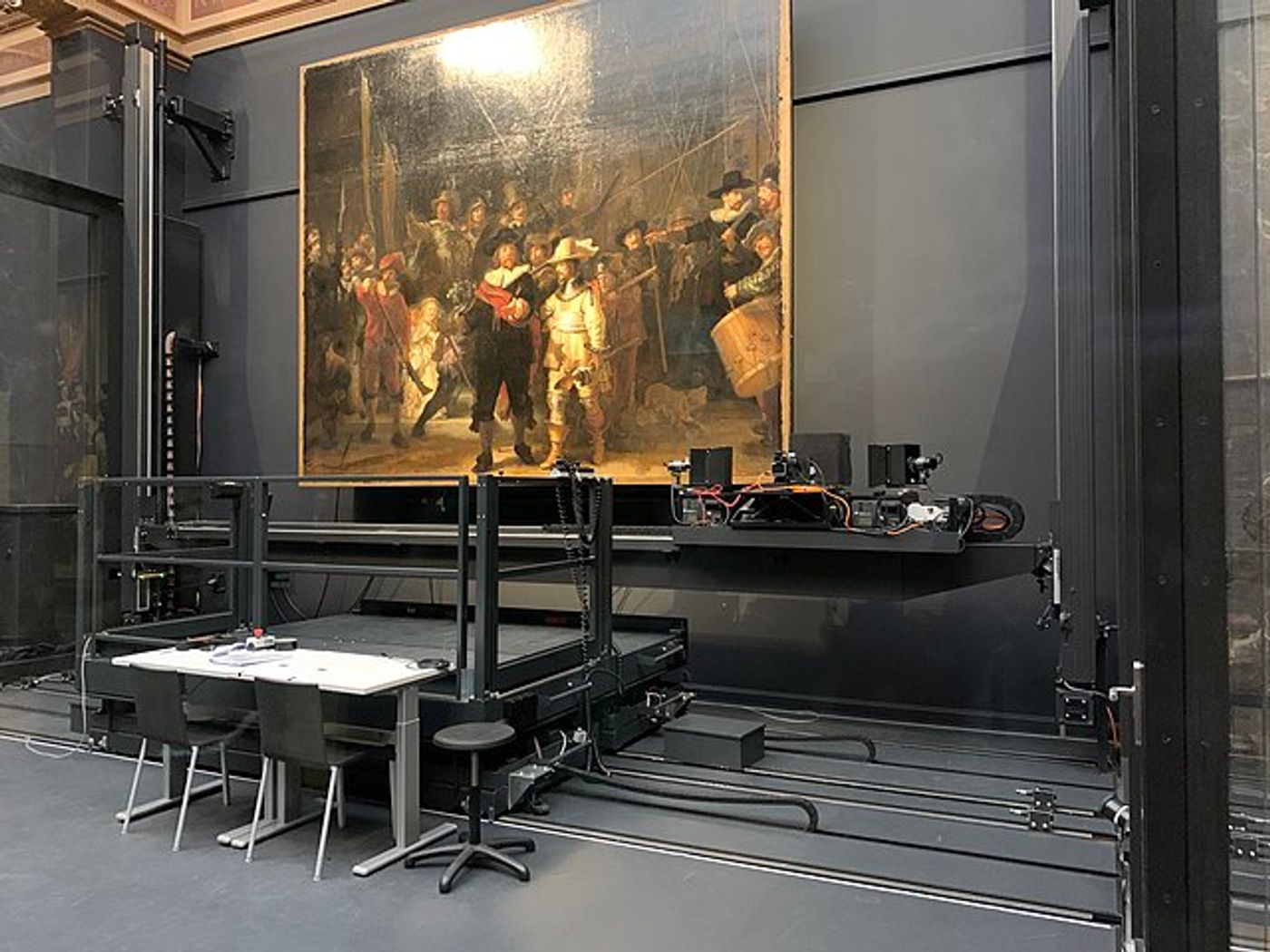New chemical analysis reveals lead-based formulates in Rembrandt's The Night Watch
Among the most famous artists of yore is Rembrandt Harmenszoon van Rijn, most commonly known simply as Rembrandt. He was a painter during the Dutch Golden Age (a period in Dutch history spanning from 1588-1672 in which Dutch culture and science were highly acclaimed throughout Europe), often regarded as one of the greatest artists in Dutch history. Rembrandt’s subject matter focused on portraiture—of both himself and his contemporaries—and Biblical illustrations.
One of Rembrandt’s most famous works is called The Night Watch, and was completed in 1642. Currently, it is displayed at the Rijksmuseum, the national museum of the Netherlands. Since 2019, it has been the topic of the project called “Operation Night Watch,” where researchers are studying how the paint and associated materials chemically react over time.
The painting is particularly noteworthy for a few reasons: 1) its massive size (12 by 14.5 feet!), 2) the dramatic use of light and shadow (a technique called tenebrism), and 3) the perception of movement. The Night Watch depicts Captain Banninck Cocq (who commissioned the painting) leading members of the Kloveniers, or his civil militia guards, moving out. Rembrandt was able to use color and shading effectively to highlight the three most important members of the crowd: Cocq, his lieutenant, and a woman carrying a dead chicken (a symbol meant to represent a defeated adversary). (Note: we particularly encourage watching the below video, which explains the painting and why it is so remarkable)
Based on findings from Operation Night Watch, it was announced in December of 2021 that there were traces of a preparatory sketch underneath the famous painting. Since Rembrandt used chalk-rich paint, this sketch was visible through a “calcium map” of the work which was seen based on contemporary scans of the painting. It allowed curators to understand the creative process behind Rembrandt’s famous painting, effectively giving insight into how he composed The Night Watch. Moreover, state-of-the-art imaging like macro X-ray fluorescence scanning (macro-XRF) and hyperspectral imaging (also called infrared reflectance imaging spectroscopy) revealed changes during the painting process. For example, feathers were originally painted into the helmet of one of the guards and subsequently painted over.
Now, new research from the Operation Night Watch project has revealed even more about the famous painting. Based on the combination of X-ray scanning and the study of tiny paint fragments with synchrotron micro X-ray probes, researchers found the presence of an unexpected compound: lead formates. Lead formates are a white corrosion product that forms on lead that has been exposed to formic acid, or formaldehyde. These formates have been discovered in oil-based paintings before (corrosion of lead-based products can lead to deterioration of the paintings), but only in modern (read: not historic) paintings. Thus, finding them in a painting from 1642 is noteworthy.
The lead author of the study, Victor Gonzalez from the Universitié Paris-Sarclay, says that lead formates are identified in areas where there was no lead pigment, leading him to believe that they likely disappear quickly. The possible quick disappearance of the lead could be why it has not been seen in other historic paintings. But finding it now, however, gives extremely valuable insight into how oil-based paints impact conservation treatments while also illuminating the complex chemistry of historic oil paintings.
To better understand the origin of the compound, the research team studied paint fragments taken from The Night Watch. This led the team to assume that Rembrandt used linseed oil containing dissolved lead oxide to enhance the paint’s drying abilities. The analytical performance of the ESRF (the European Synchrotron Radiation Facility in Grenoble, France) allowed the team to map the presence of the lead formates and follow their formation over time. The organization of the compounds allowed for the formation of new theories about how chemical compounds crystallize in old paint layers.
There is much more to parse out here—such as better understanding the origin of the lead formates and determining whether they could also originate from past restoration treatments. Moreover, it opens the possibility that other historic painters were using similar materials, leading to new research avenues focusing on the reactivity of historical pigments and cultural heritage preservation. Results from this study highlight the importance of an interdisciplinary approach to understanding human culture—where in this instance chemistry and the history of art needed to come together to aid in understanding the composition of one of the greatest paintings of all time.
Sources: Operation Night Watch—Rijksmuseum, The Guardian, Smithsonian Magazine, Angewandte Chemie International Edition, Dalton Transactions, ESRF, Science Daily









